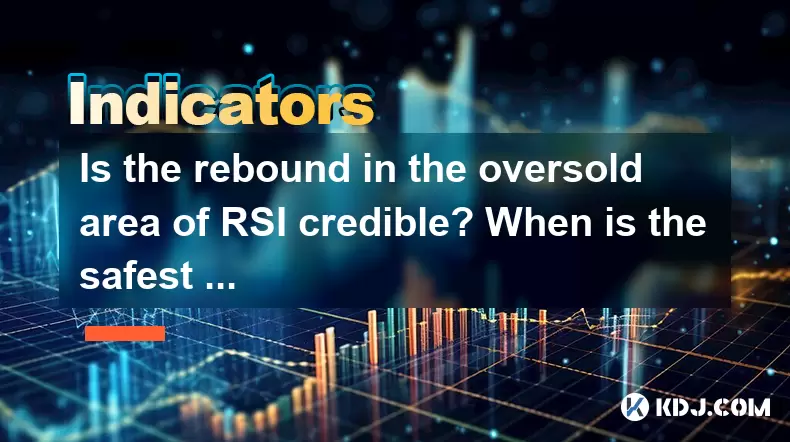-
 Bitcoin
Bitcoin $119800
1.38% -
 Ethereum
Ethereum $3873
3.25% -
 XRP
XRP $3.247
1.85% -
 Tether USDt
Tether USDt $1.001
0.02% -
 BNB
BNB $840.4
5.94% -
 Solana
Solana $190.0
2.55% -
 USDC
USDC $1.000
0.03% -
 Dogecoin
Dogecoin $0.2433
2.69% -
 TRON
TRON $0.3197
-0.05% -
 Cardano
Cardano $0.8367
1.39% -
 Sui
Sui $4.327
3.11% -
 Hyperliquid
Hyperliquid $44.00
0.31% -
 Stellar
Stellar $0.4461
1.76% -
 Chainlink
Chainlink $19.25
4.61% -
 Hedera
Hedera $0.2941
3.90% -
 Bitcoin Cash
Bitcoin Cash $598.4
6.89% -
 Avalanche
Avalanche $26.19
4.67% -
 Litecoin
Litecoin $115.1
0.50% -
 Shiba Inu
Shiba Inu $0.00001427
1.55% -
 Toncoin
Toncoin $3.379
2.01% -
 UNUS SED LEO
UNUS SED LEO $8.966
-0.16% -
 Ethena USDe
Ethena USDe $1.001
0.02% -
 Uniswap
Uniswap $11.04
4.16% -
 Polkadot
Polkadot $4.239
2.00% -
 Monero
Monero $324.6
0.36% -
 Bitget Token
Bitget Token $4.672
2.46% -
 Pepe
Pepe $0.00001294
2.69% -
 Dai
Dai $0.0000
0.01% -
 Cronos
Cronos $0.1443
2.71% -
 Aave
Aave $302.9
1.98%
Is the rebound in the oversold area of RSI credible? When is the safest time to enter the market?
The RSI indicator can signal potential reversals, but in crypto markets, oversold conditions don't always lead to immediate rebounds, making confirmation from volume, trendlines, and other indicators crucial.
Jun 15, 2025 at 12:49 am

Understanding the RSI Indicator and Its Role in Trading
The Relative Strength Index (RSI) is a momentum oscillator used in technical analysis to measure the speed and change of price movements. It typically ranges from 0 to 100, with values below 30 indicating oversold conditions, and values above 70 suggesting overbought territory. Traders often rely on RSI to identify potential reversal points in the market. However, interpreting these signals without additional context can be misleading.
In cryptocurrency markets, where volatility is high and trends can shift rapidly, understanding how RSI behaves becomes even more critical. Simply seeing the RSI enter the oversold zone doesn't guarantee an immediate price rebound. This raises the question: Is the rebound in the oversold area of RSI credible?
Why Oversold RSI Doesn't Always Mean a Reversal
One common misconception among traders is that when RSI drops below 30, it's a buy signal. While this may work in some cases, especially in range-bound markets, it can lead to losses during strong downtrends. In a powerful bearish trend, the price can remain in the oversold region for extended periods. For instance, during the 2022 crypto crash, many altcoins remained in oversold conditions for weeks while continuing to fall.
Therefore, traders should not solely rely on RSI crossing into oversold levels as a trigger to buy. Instead, they must consider other factors such as trend strength, volume patterns, and broader market sentiment before making decisions.
Combining RSI With Other Indicators for Better Accuracy
To increase the reliability of RSI signals, it's essential to use it alongside complementary tools. Some effective combinations include:
- Moving Averages: When RSI shows oversold conditions and the price crosses above a key moving average like the 50-period or 200-period MA, it strengthens the case for a reversal.
- Volume Analysis: A surge in trading volume during an oversold reading could indicate institutional buying or a shift in sentiment.
- Fibonacci Retracement Levels: If RSI hits oversold levels near a major Fibonacci support level, the probability of a bounce increases significantly.
By combining RSI with these tools, traders can filter out false signals and improve their entry timing.
Identifying the Safest Time to Enter the Market
Determining the safest time to enter the market requires patience and precision. Here are several criteria that experienced traders use to time entries more effectively:
- Wait for Price Confirmation: Look for bullish candlestick patterns like hammers, engulfing bars, or morning stars forming after an RSI rebound.
- Check for Divergence: Hidden or regular RSI divergence between price and indicator movement can signal upcoming reversals.
- Monitor Macro Conditions: Avoid entering long positions during negative news cycles or regulatory crackdowns, even if technical indicators suggest a buy.
A safer entry point often comes when multiple signals align rather than relying on a single indicator.
Practical Steps to Evaluate RSI Signals in Crypto Trading
For traders aiming to incorporate RSI into their strategy effectively, here’s a step-by-step guide to evaluate its signals accurately:
- Set Up RSI on Your Chart: Use a 14-period setting unless you're scalping, in which case shorter periods like 7 or 10 might be better.
- Identify Key Zones: Mark the 30 and 70 thresholds clearly on your chart to visually track when the indicator enters oversold or overbought areas.
- Look for Divergences: Compare price highs/lows with RSI highs/lows to spot hidden or regular divergences.
- Add Volume Indicators: Overlay volume or On-Balance Volume (OBV) to confirm whether buyers are stepping in during dips.
- Use Trendlines and Support/Resistance: Draw support and resistance lines to see if the price reacts to them when RSI is in extreme zones.
- Apply Filters Based on Higher Timeframes: Check weekly or daily charts to ensure your trade aligns with the dominant trend.
These steps help reduce false positives and increase confidence in RSI-based entries.
Case Study: Evaluating RSI in a Real Cryptocurrency Trade
Let’s take a practical example using Bitcoin in early 2023. After a prolonged downtrend, BTC fell sharply and RSI dropped below 30. Many retail traders rushed in, expecting a quick rebound. However, the price continued to consolidate sideways for days before eventually recovering.
What separated successful trades from losing ones was the application of additional filters:
- The price found support near the $20,000 psychological level, which acted as a historical anchor.
- Volume picked up significantly two days after the initial RSI signal, confirming accumulation.
- MACD crossed above the signal line, reinforcing the bullish setup.
Traders who waited for these confirmations entered at better prices and avoided premature moves.
Frequently Asked Questions
Q: Can I trust RSI in highly volatile crypto markets?
A: Yes, but with caution. RSI works best when combined with other tools like volume and trend analysis. Volatility can cause RSI to stay in oversold or overbought zones longer than expected.
Q: How do I know if a rebound from oversold RSI is genuine?
A: Look for confluence—price reacting to key support levels, increasing volume, and bullish candlestick patterns. Also, check for RSI divergence with price action.
Q: Should I always wait for RSI to hit 30 before buying?
A: No. Sometimes strong rallies begin before RSI reaches 30. Focus on trend strength and momentum rather than rigid thresholds.
Q: What timeframe is best for using RSI in crypto trading?
A: It depends on your strategy. Day traders may prefer 5-minute or 15-minute charts with shorter RSI settings, while swing traders often use daily or 4-hour charts with standard 14-period RSI.
Disclaimer:info@kdj.com
The information provided is not trading advice. kdj.com does not assume any responsibility for any investments made based on the information provided in this article. Cryptocurrencies are highly volatile and it is highly recommended that you invest with caution after thorough research!
If you believe that the content used on this website infringes your copyright, please contact us immediately (info@kdj.com) and we will delete it promptly.
- Tether Gold's Meteoric Rise: Market Cap and Soaring Gold Demand
- 2025-07-28 10:30:11
- Reddit, Crypto, and Altcoins: Navigating the Hype in 2025
- 2025-07-28 10:30:11
- Bitcoin, Altcoin, Volume Surge: Decoding the Crypto Market's Latest Moves
- 2025-07-28 10:50:20
- Bitcoin, Altcoins, and 2024 Targets: A NYC Perspective
- 2025-07-28 10:50:21
- Moo Deng Meme-Coin Mania: ROI or Just Hype?
- 2025-07-28 10:55:13
- Ethereum, Injective, and Tokenized Stock: A New Era in DeFi?
- 2025-07-28 11:10:12
Related knowledge

What signal does the ROC send when it rises rapidly from a low level and breaks through the zero axis?
Jul 27,2025 at 10:15am
Understanding the Rate of Change (ROC) IndicatorThe Rate of Change (ROC) is a momentum-based oscillator used in technical analysis to measure the perc...

What does it mean when the price breaks through the double bottom neckline and the moving averages are arranged in a bullish pattern?
Jul 28,2025 at 10:57am
Understanding the Double Bottom PatternThe double bottom is a widely recognized reversal chart pattern in technical analysis, particularly within the ...

What signal does the DMA fast line cross the slow line above the zero axis?
Jul 28,2025 at 05:42am
Understanding the DMA Indicator and Its ComponentsThe DMA (Difference of Moving Averages) indicator is a technical analysis tool used in cryptocurrenc...

What does it mean that the rebound is blocked after the moving average is arranged in a short position for the first time?
Jul 26,2025 at 10:51am
Understanding the Short-Term Moving Average ConfigurationWhen traders refer to a 'short position arrangement' in moving averages, they are describing ...

What does it mean that the ZIGZAG low point is raised and the high point breaks through the previous peak?
Jul 28,2025 at 03:28am
Understanding the ZIGZAG Indicator in Cryptocurrency TradingThe ZIGZAG indicator is a technical analysis tool widely used in cryptocurrency trading to...

What does it mean that the parabolic indicator and the price break through the previous high at the same time?
Jul 26,2025 at 07:22pm
Understanding the Parabolic Indicator (SAR)The Parabolic SAR (Stop and Reverse) is a technical analysis tool developed by J. Welles Wilder to identify...

What signal does the ROC send when it rises rapidly from a low level and breaks through the zero axis?
Jul 27,2025 at 10:15am
Understanding the Rate of Change (ROC) IndicatorThe Rate of Change (ROC) is a momentum-based oscillator used in technical analysis to measure the perc...

What does it mean when the price breaks through the double bottom neckline and the moving averages are arranged in a bullish pattern?
Jul 28,2025 at 10:57am
Understanding the Double Bottom PatternThe double bottom is a widely recognized reversal chart pattern in technical analysis, particularly within the ...

What signal does the DMA fast line cross the slow line above the zero axis?
Jul 28,2025 at 05:42am
Understanding the DMA Indicator and Its ComponentsThe DMA (Difference of Moving Averages) indicator is a technical analysis tool used in cryptocurrenc...

What does it mean that the rebound is blocked after the moving average is arranged in a short position for the first time?
Jul 26,2025 at 10:51am
Understanding the Short-Term Moving Average ConfigurationWhen traders refer to a 'short position arrangement' in moving averages, they are describing ...

What does it mean that the ZIGZAG low point is raised and the high point breaks through the previous peak?
Jul 28,2025 at 03:28am
Understanding the ZIGZAG Indicator in Cryptocurrency TradingThe ZIGZAG indicator is a technical analysis tool widely used in cryptocurrency trading to...

What does it mean that the parabolic indicator and the price break through the previous high at the same time?
Jul 26,2025 at 07:22pm
Understanding the Parabolic Indicator (SAR)The Parabolic SAR (Stop and Reverse) is a technical analysis tool developed by J. Welles Wilder to identify...
See all articles

























































































